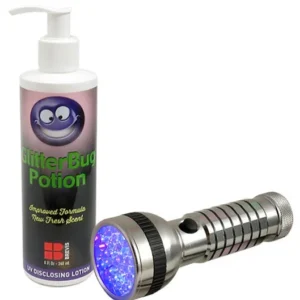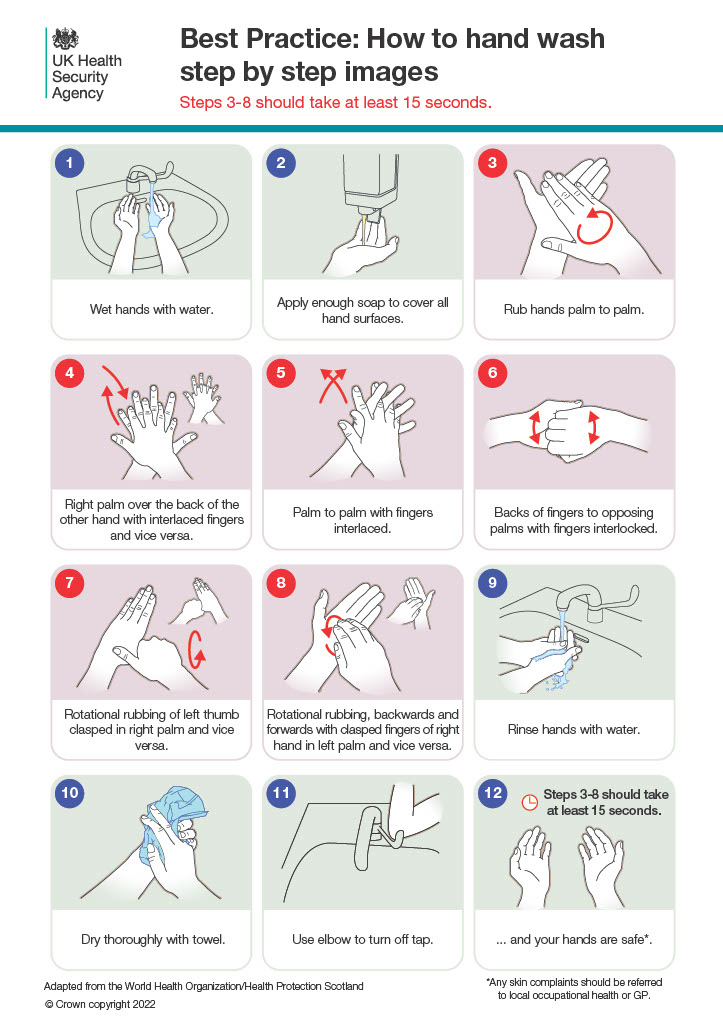BrisDoc is firmly committed to its values and in keeping with them, deliver the highest possible standard of Infection Prevention Control (IPC) that is both safe and clinically effective to all our patients, staff, and community.
Patients, Clinicians and Operational staff are put at potential risk of developing a healthcare-associated infection with contaminated hands. Hand hygiene is considered a primary measure for reducing the risk of transmitting infection among patients and health care personnel. It is the simple but most effective way of preventing infection and the spread of disease.
At BrisDoc, we’re running a Hand Hygiene Awareness Programme led by our hosts, supported by the handwashing training kit. Each clinician will be approached once a year to complete a hand hygiene audit as part of this initiative.
Below is some guidance on how the programme works and what to expect
Using handwashing training kits for the audits:
GlitteryBug Potion and UV torch.

Hand hygiene training kits are provided for each base which contains the essentials to demonstrate correct hand washing as shown in the picture above.
How effective a clinician’s hand washing is can be demonstrated using the GlitterBug Potion. This is a simple 3 step process:
- Ask the clinician to rub the Potion on their hands. Use the UV torch to show the glitters in the hands (acting as bugs!!!)
- The clinician washes and dries their hands as normal. Please see the link below for the correct handwashing techniques that should be followed by the clinicians. https://www.england.nhs.uk/wp-content/uploads/2022/09/nipc-manual-appendix-1-handwashing.pdf
- When placed under the UV torch any areas not washed properly will have glitters. It is the areas that are not washed properly where germs could survive the hand washing process and it is these areas the clinician needs to concentrate on to improve their hand cleaning.

Before performing hand hygiene:
- expose forearms (bare below the elbow).
- if disposable over-sleeves are worn for religious reasons, these must be removed and disposed of before performing hand hygiene, then replaced with a new pair.
- remove all hand and wrist jewellery. The wearing of a single, plain metal finger ring, eg a wedding band, is permitted but should be removed (or moved up) during hand hygiene.
- A religious bangle can be worn but should be moved up the forearm during hand hygiene and secured during patient care activities.
- ensure fingernails are clean and short, and do not wear artificial nails or nails products.
- cover all cuts or abrasions with a waterproof dressing.